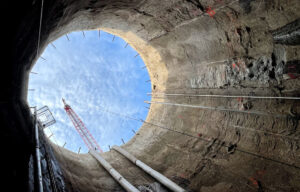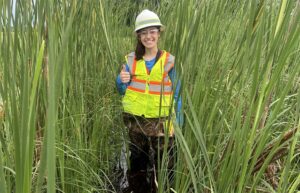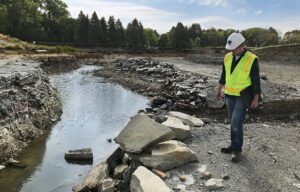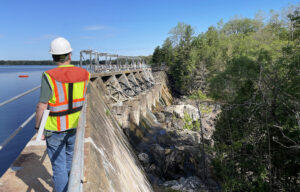An ecosystem approach to watershed planning and water resource protection
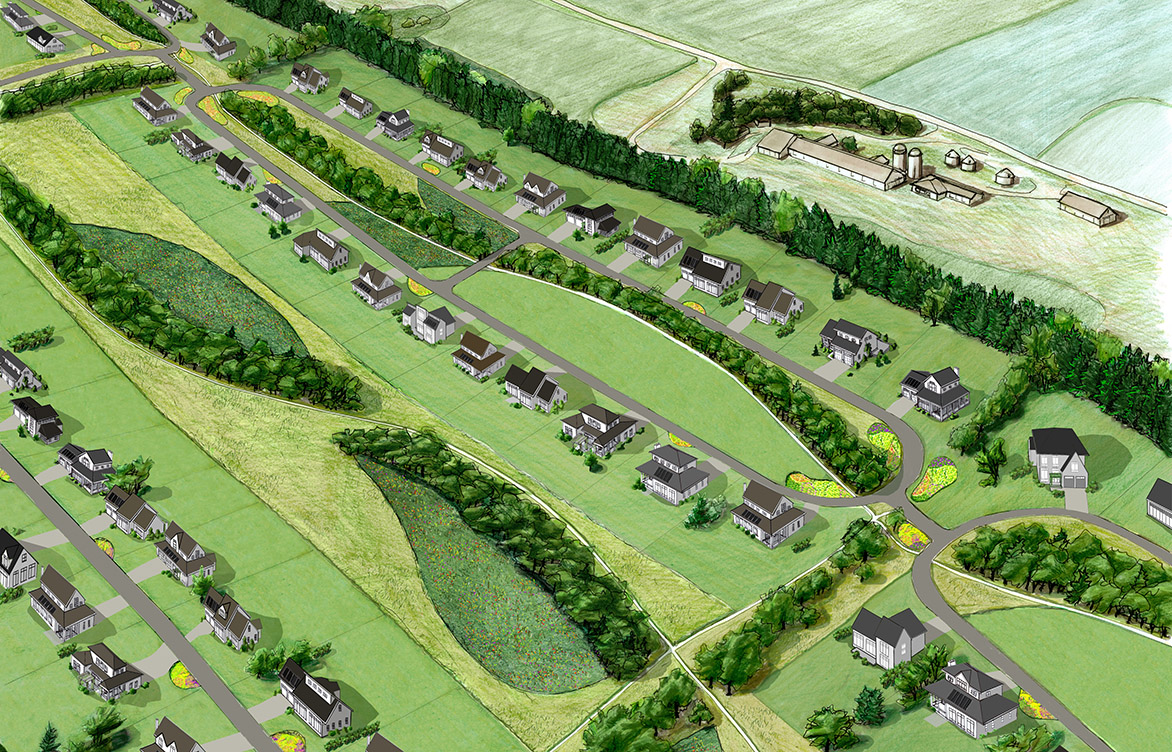 Unlike a traditional rural residential layout that divvies land up into 2- to 5-acre lots, a conservation design (like the one above for the City of Hanover, Minnesota) creates smaller lots for residences but preserves green space by designing around valuable natural components. When planned from the start, conservation design is typically more cost-effective while also protecting the natural features and ecosystem of the area.
Unlike a traditional rural residential layout that divvies land up into 2- to 5-acre lots, a conservation design (like the one above for the City of Hanover, Minnesota) creates smaller lots for residences but preserves green space by designing around valuable natural components. When planned from the start, conservation design is typically more cost-effective while also protecting the natural features and ecosystem of the area.
Despite environmental protection efforts of federal, state, and local units of government (including watershed organizations), many natural waterbodies continue to degrade. The cause? Urbanization, development, soil degradation, climate change, and invasive species, to name just a few. As communities grow and continue to displace green space, valuable ecosystem functions—and therefore, people—suffer.
To protect and restore water resources, watershed organizations and cities must look beyond an end-of-the-pipe approach that addresses the impact of impervious surfaces and expand this to consider an ecosystem approach to address the impacts of the altered urban hydrology.
Why is it critical to maintain a healthy urban ecosystem?
An ecosystem consists of all the living organisms (including people) in a particular area interacting with nonliving components—such as air, water, and mineral soil. A healthy urban ecosystem establishes a balance between the built infrastructure of a community and the green spaces it occupies. When this balance is maintained, ecosystems help provide clean air and water, productive soil, trees that mitigate the urban heat island effect, pollinating insects, erosion control, flood protection, and more.
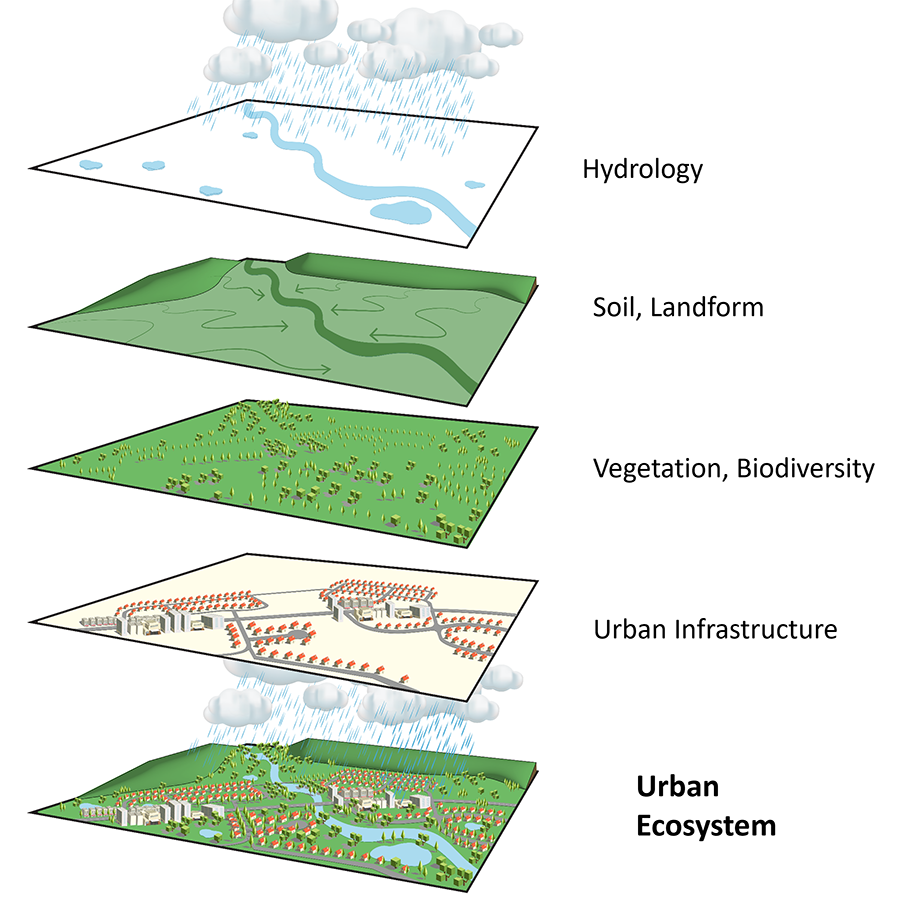
But effectively achieving a sustainable urban ecosystem balance is challenging. For example, not all green spaces help achieve a healthy urban ecosystem. While lawns are green, common construction methods result in excessive compaction and destruction of soil health, reducing the lawn’s ability to absorb stormwater.
What’s the alternative? One solution is to use native plantings in unused lawns. This approach can significantly improve soil structure, helping absorb water runoff during rain events and positively contributing to the ecosystem by recharging groundwater, sequestering CO2, providing bird and pollinator habitat, decreasing fertilizer and pesticide use, and reducing the volume of runoff reaching lakes and streams. Seemingly small changes to initial design and development can result in significant ecosystem improvements. A watershed organization’s first step toward actively regenerating a healthy urban ecosystem is to gain a comprehensive understanding of which items in an ecosystem approach fall within their jurisdiction to influence while, at the same time, teaming with local cities that have direct influence over development.
Environmental management strategies for watershed organizations
Leveraging a holistic ecosystem approach, watershed organizations can play a crucial role in implementing effective environmental management strategies through policies and regulations, capital improvement projects, outreach programs, and planning.
Policies and regulations
From development permitting to working with cities on ordinance improvements that will boost ecosystem function, watershed organizations can mitigate impervious surface impacts, preserve and create green space, and develop habitat within their jurisdiction. For example, this could mean amending your 10-year plan to include ecosystem goals, developing a soil regeneration rule, establishing stream protection rules, or requiring—not just recommending—the implementation of Low Impact Design (LID) and green infrastructure development practices. Overlay districts (a geographic zoning district layered on top of another existing zoning district) can be established with additional regulations to provide further protection for high value natural areas and corridors and/or to prioritize zones for projects and incentives.
Capital improvement projects
Watershed organizations can address urban heat island effects, create habitat, and promote climate resilience by taking an ecosystem approach to their capital improvement projects. Soil regeneration, native plant community restoration, tree planting, and wildlife corridor development are just a few examples. When planning capital improvement projects, watershed organizations can also adopt LID principles that preserve and restore native plant communities, integrate a significant amount of green space (including green roofs), reduce the amount of pavement, and shade pavement. By expanding the green within our gray urban infrastructure, we promote climate resiliency and improve ecosystem function.
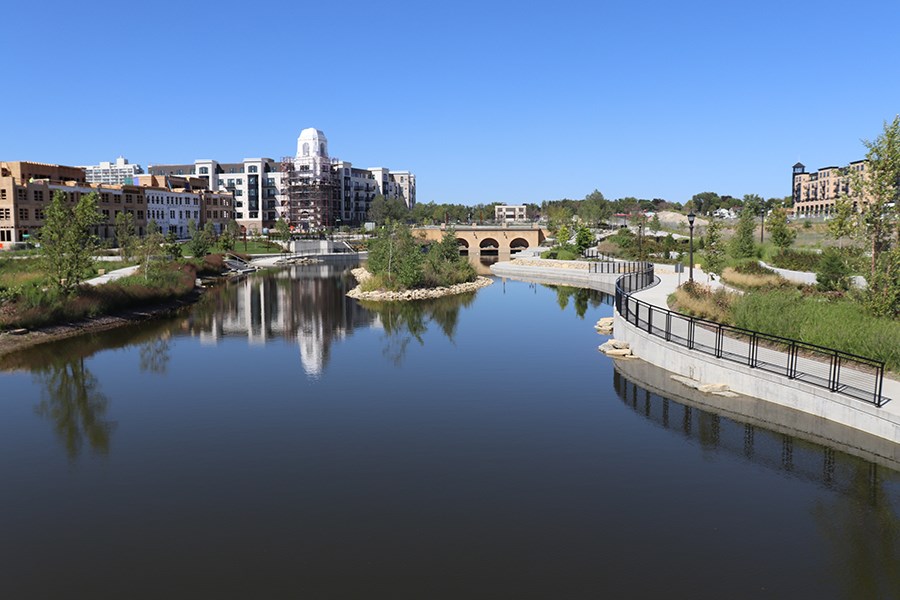
Outreach and education
Watershed organizations can also actively invest in outreach programs, fostering awareness and encouraging sustainable practices in the local community. This could mean educating policymakers on how development can coexist with green space to expand ecosystem services. Watershed organizations can also develop citizen science programs to collect ecosystem data and share what they learn. Additional cost-share opportunities might involve working with property owners to establish steep slope, stream, or lake buffers to prevent ecosystem degradation.
Planning efforts
Active coordination with city planning efforts allows watershed organizations to integrate environmental considerations into land use decisions and work toward long-term ecosystem resilience. In doing so, watershed organizations can advocate for sustainable development designs that will help regenerate urban ecosystems while still accommodating people’s needs.

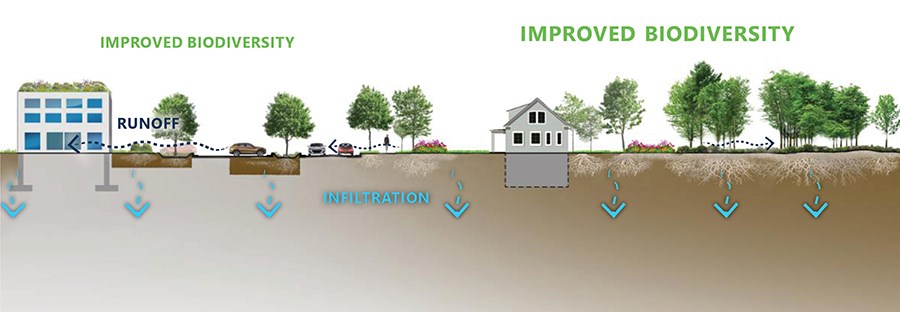
Implementing an ecosystem approach
Adopting an ecosystem approach for watershed planning is crucial to protecting human health. Embracing a holistic perspective can help safeguard the integrity of ecosystems, protect water resources, improve air quality, provide valuable places of respite, and promote resilience against environmental challenges such as climate change and pollution.
Our experienced team of landscape architects, ecologists, and civil engineers understand how to create balanced solutions that support the long-term well-being of both ecosystems and the communities that depend on them. Contact us to learn more about how to employ an ecosystem approach for your watershed planning needs.
Interested in learning more about watershed management? Join us at the 2023 Minnesota Watersheds Annual Conference and Trade Show in Alexandria, Minnesota, on November 28–December 1. Visit us at Booth #40 and attend the “Developing Strategies for Ecosystem Protection and Enhancement within Riley Purgatory Bluff Creek Watershed District (RPBCWD)” session on November 30, presented by Landscape Architect and Ecologist Fred Rozumalski and RPBCWD’s Terry Jeffery.
About the author
Fred Rozumalski is a landscape architect and ecologist with more than three decades of experience in landscape architecture, ecology, horticulture, native-landscape design and restoration, and lake and wetland shoreline restoration. Working with a broad range of public and private clients, he strives to work with nature to create economically viable, low-maintenance landscapes that are beautiful and functional for people while also supporting plant and animal diversity and providing climate resilience.


